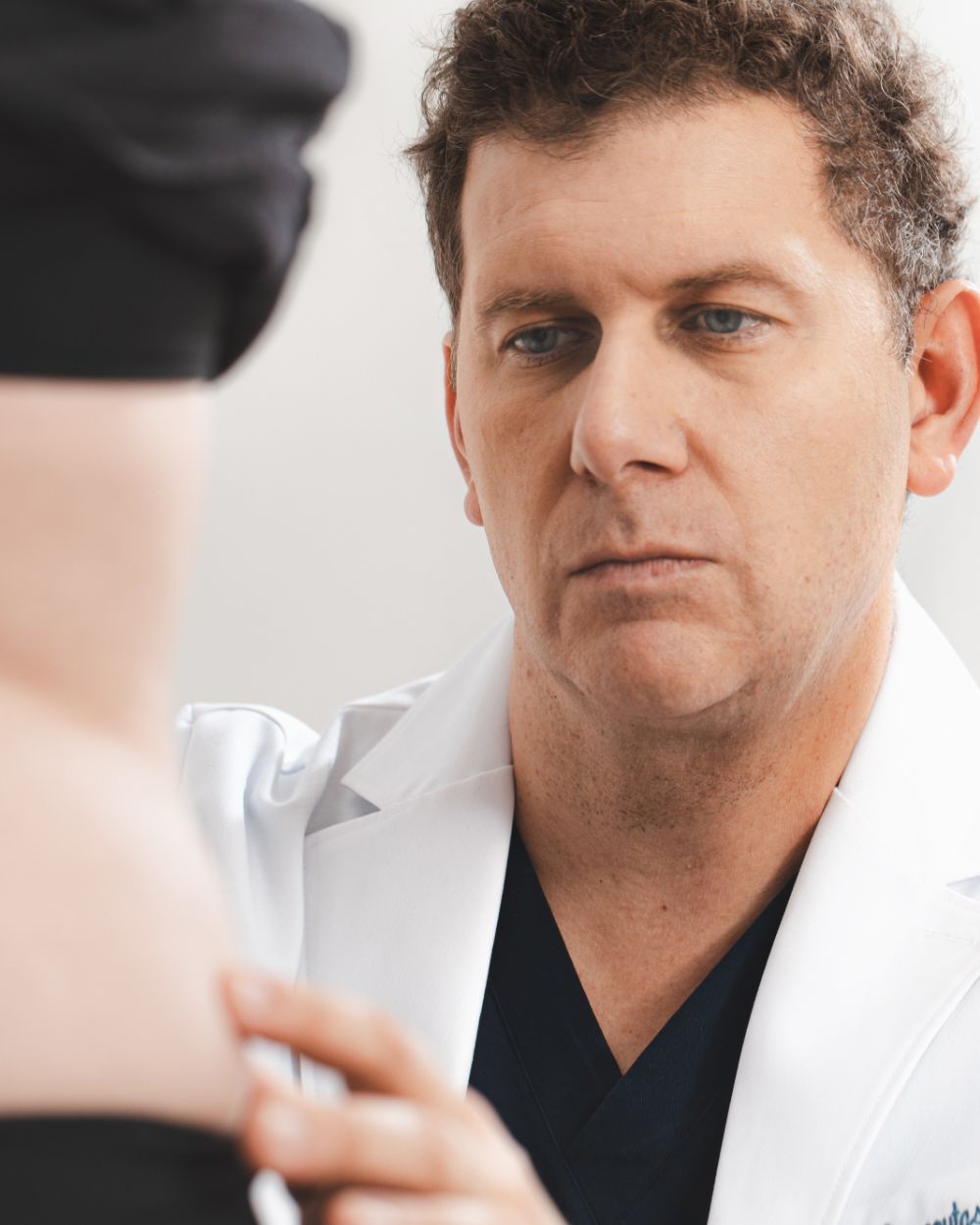Tummy Tuck (Abdominoplasty)
Tummy tuck surgery, also known as an “abdominoplasty,” is a procedure that produces a flatter and more slender abdomen by removing excess skin and fat. This procedure also typically tightens stretched abdominal muscles to achieve a more toned and strengthened midsection.
As we age, our skin loses its elasticity leading to the accumulation of loose, saggy, stretched skin. Where on the body this happens tends to differ between men and women, though it is often seen in the abdomen regardless of sex. Our metabolism also tends to slow as we age, leading to exercise-resistant fat deposits along the abdomen and flanks. Finally, the muscles of our core (rectus abdominis) may weaken or shift out of position (diastasis recti). All of these processes may be exaggerated by pregnancy and / or large weight fluctuations.
Get In Touch
Am I A Good Tummy Tuck Candidate?
Ideal tummy tuck candidates often demonstrate several of the following features:
- Inability to achieve the abdominal contour you seek despite a consistently good diet and regular exercise
- Excess skin and / or fat following pregnancy / breastfeeding, menopause or weight loss
- Loss of core strength with or without increased abdominal projection
How can a tummy tuck help?
Tighten Abdominal Muscles
The core abdominal muscles (rectus abdominis) start off as two parallel muscles on either side of the belly button. As we age, experience pregnancy or undergo large weight fluctuations, these muscles stretch to the side and become more like parentheses. This typically causes increased abdominal projection (fullness) and may even result in a loss of core strength. These anatomic changes usually can’t be repaired through diet and exercise alone. During a tummy tuck procedure, the muscles are surgically tightened back together in the midline restoring abdominal contours and improving core strength.
Remove Stretch Marks
Stretch marks (striae) are often seen on the abdomen. This is particularly true of skin that has been stretched during pregnancy or with large weight fluctuations. During a tummy tuck procedure, stretch marks on the abdomen are reduced as this excess skin is removed.
Eliminate Stubborn Fat
Patients who have achieved a healthy weight are often left with areas of fat deposits that are difficult to eliminate through diet and exercise alone. Liposuction can be performed during the tummy tuck procedure to remove this stubborn fat and produce a more slender midsection.
Improved Confidence
Sagging skin, excess fat, and weak muscles in the abdominal region can cause embarrassment and detract from a person’s self-confidence. Tummy tuck surgery eliminates these problems to produce a flatter and more attractive abdominal area that you won’t be afraid to show off.
What Is A High Lateral Tension Abdominoplasty (HLTA)?
There are many different surgical variations to a tummy tuck. During his aesthetic fellowship, Dr. Gougoutas adopted a specialized abdominoplasty technique that few surgeons perform called a High Lateral Tension Abdominoplasty (HLTA). The HLTA has many advantages over conventional tummy tuck techniques which include:
- Less central tension on the abdominal incision. This allows for a lower-positioned incision with less tendency to pull the pubic hairline upwards.
- The ability to perform extensive liposuction of the abdomen and flanks at the time of the abdominoplasty which dramatically improves contours
- A mini-lateral thigh lift
During your consultation Dr. Gougoutas will review the advantages of this procedure with you and determine if you are a good candidate.
Tummy Tuck FAQs
Q. What is recovery like after a tummy tuck?
A. Discomfort following a tummy tuck procedure will be manageable with oral pain medications. Most swelling and bruising will go away after 2-3 weeks, though it may take many months until all swelling is gone. Patients will initially feel tightness in the abdomen and may even need to walk slightly hunched over for the first week. Most patients are able to return to work within 14 days following the procedure, but are asked to avoid strenuous activity for at least 6 weeks.
Q. Will I have drains following my tummy tuck?
A. Yes. Usually 2 surgical drains are required following a tummy tuck procedure and will remain in place for 1-2 weeks following surgery.
Q. Where are the incisions for a tummy tuck?
A. One large incision will extend from hip-to-hip and be positioned just above the pubic hairline. A second, smaller incision, will be placed around the belly button.
Q. Does a tummy tuck address my pubic region?
A. Yes. A tummy tuck will typically remove excess fatty tissue from the central pubic mound and elevate the fat pad above the pubic bone (pubic mons).
Q. What is a reverse abdominoplasty?
A. A reverse abdominoplasty is designed to improve the contour of the upper-most part of the abdomen (epigastrum). This part of the abdomen is often the most challenging to sculpt with a conventional abdominoplasty. To directly target this region, an incision is made within the creases beneath the breasts and excess skin and subcutaneous tissue (fat) is pulled up (rather than down with a conventional abdominoplasty) and removed. A reverse abdominoplasty is never performed at the same time as a conventional abdominoplasty.
